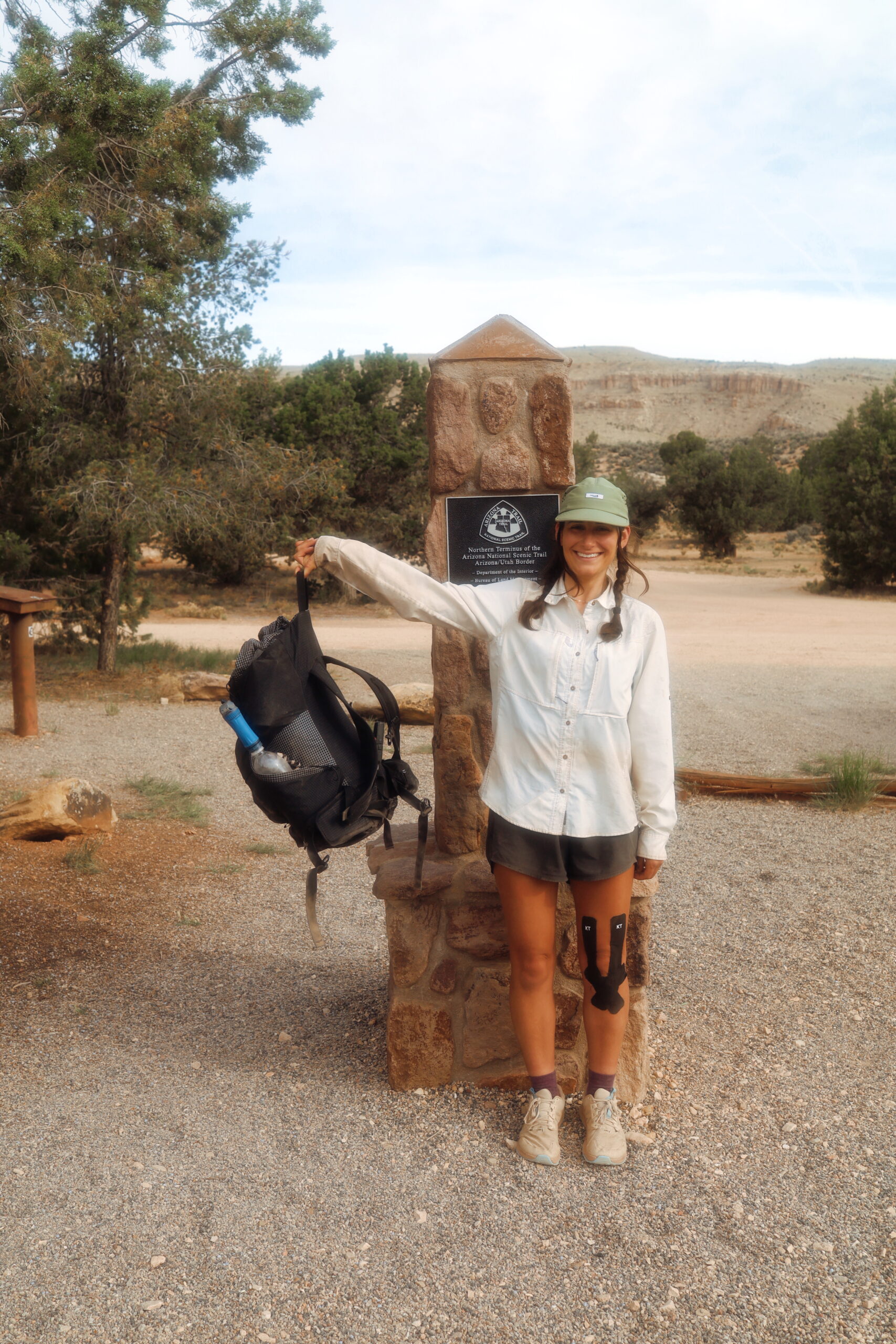
What to Wear Hiking in the Heat: Summer Gear Breakdown
Summer is the season of long days, high mileage, and sun-soaked trails—but it’s also the time when the right gear can make or break your hike. Staying cool, dry, and protected from the elements is key. Whether you’re out for a weekend backpacking trip or logging serious thru-hike miles, your summer clothing system should strike a balance between breathability, sun protection, and quick-drying performance.
Hiking in extreme heat can pose serious dangers, especially for those unprepared for high temperatures and intense sun exposure. Prolonged exertion in hot conditions increases the risk of dehydration, heat exhaustion, and heat stroke — a potentially life-threatening condition where the body can no longer regulate its temperature. Symptoms like dizziness, nausea, confusion, rapid pulse, and even loss of consciousness can develop quickly. Additionally, sunburn and electrolyte imbalances can impair performance and judgment on the trail. Without adequate water, shade, rest, and preparation, even experienced hikers can find themselves in dangerous situations. It’s crucial to start early, stay hydrated, wear sun-protective clothing, and know when to turn back.
This article mainly covers your clothing and hydration while hiking out in the heat but we always recommend incorporating sun accessories like an umbrella while experiencing these types of conditions. Another pro tip is scheduling your hiking time for the least amount of sun exposure. Maybe that means waking up early and taking a long break in the heat of the day.
In this guide, we’ll walk through how to dress smart for summer hikes and break down a few popular clothing setups so you can decide what works best for your style, climate, and intensity level.
Moisture Management: Staying Dry (and Cool) in Summer Heat
When you’re hiking in the summer, your body is constantly sweating to keep itself cool. It’s an essential survival function—but if that sweat sits on your skin or stays trapped in your clothing, it can start working against you. Wet, saturated clothing can lead to chafing, blisters, overheating, or even sudden cooling if the wind picks up. That’s where moisture management comes in. Your clothing system should work with your body by pulling sweat away from your skin, helping it evaporate quickly, and drying fast so you don’t stay damp for long stretches on trail.
This is one of the main reasons hikers are often told to avoid cotton. While cotton might feel light and breathable at first, it absorbs moisture like a sponge and dries very slowly—especially in humid environments or shaded canyons. Once it’s wet, it tends to stick to your body, creating hot spots under shoulder straps or between your thighs. That trapped moisture can lead to painful chafing, soggy discomfort, and an increased risk of blisters if you’re wearing cotton socks or liners. In cool alpine zones or in sudden summer storms, wet cotton also loses all insulating properties and can become downright dangerous.
Instead, for most summer hiking, it’s best to rely on technical fabrics designed to handle sweat and heat. Nylon is one of the most common materials used in hiking shirts and pants. Polyester is another popular option, especially for next-to-skin layers like sun hoodies or synthetic tees. It tends to wick moisture more efficiently than nylon and can feel cooler against the skin. While it’s not quite as rugged as nylon, it’s generally more breathable and dries faster in many cases.
Lightweight merino wool also deserves mention. Though slower to dry than synthetic fabrics, it has excellent temperature regulation properties and doesn’t hold onto odors the way polyester sometimes can. Merino is a good option for hikers with sensitive skin or those doing multi-day trips who want their clothing to stay fresh and comfortable over time. It’s especially effective when blended with synthetics for added durability and moisture control.
What all these materials have in common is their ability to wick moisture away from your skin and disperse it across the fabric’s surface so it can evaporate quickly. This keeps your core temperature more stable, reduces skin friction, and makes a huge difference in how you feel mile after mile. Good moisture management also contributes to mental endurance. When you’re dry and comfortable, you’re more likely to stay focused, move confidently, and keep going even as the day heats up.
Pay close attention to your socks and underwear as well. Your feet generate a lot of heat and friction on summer hikes, so use lightweight merino or synthetic socks that manage moisture without bunching or stretching out. Avoid cotton here at all costs. The same goes for underwear—choose materials that breathe and dry fast to reduce the risk of chafing.
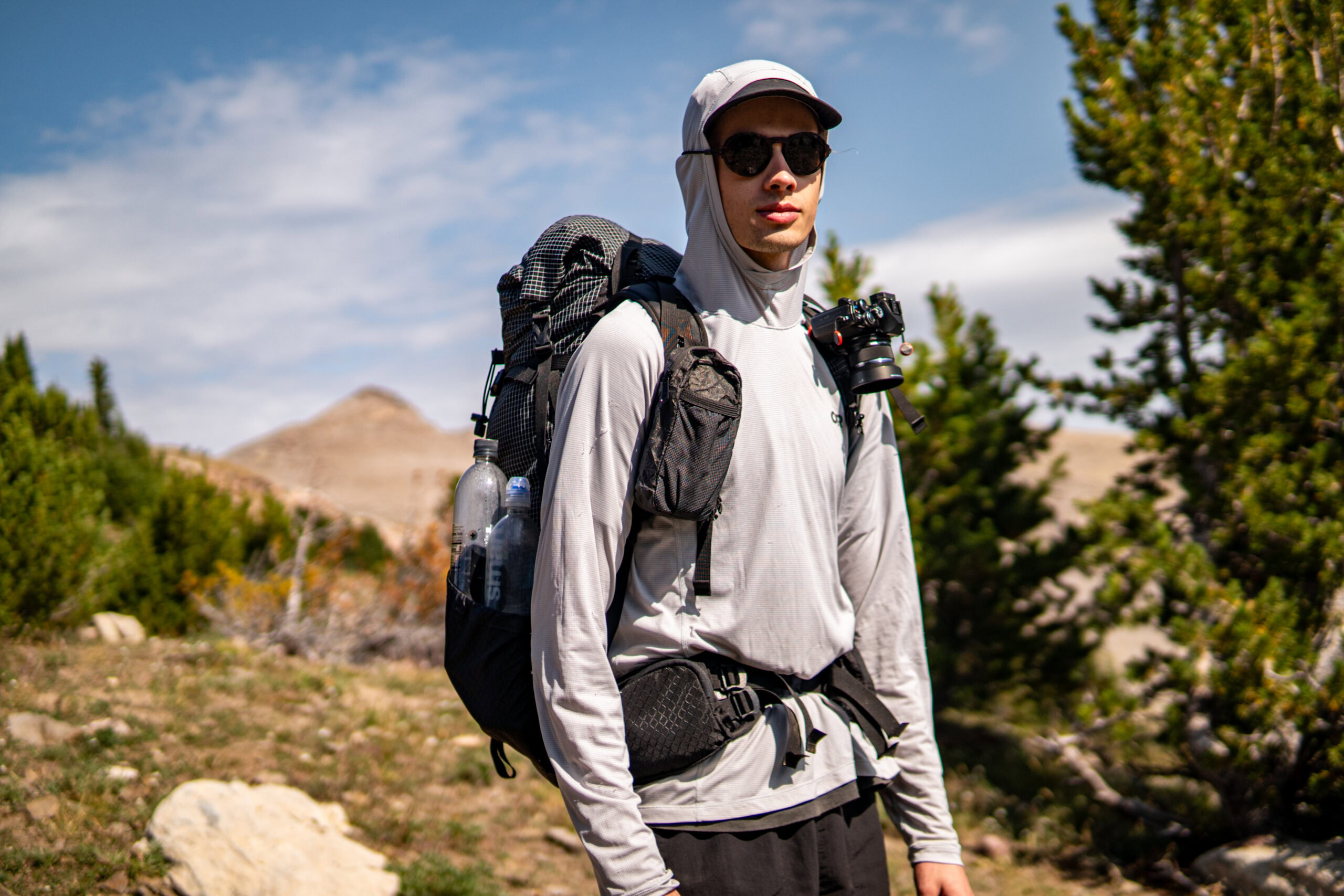
Sun Protection: Your First Line of Defense on Summer Trails
When hiking in the summer, sun exposure becomes one of the most constant and underestimated stressors on your body. Hours of direct sunlight, especially at high elevations or in exposed terrain like alpine ridgelines and desert basins, can take a serious toll—not just in the form of sunburn, but through dehydration, fatigue, and long-term skin damage. Sunscreen alone isn’t always enough. It can sweat off, wear away, or require frequent reapplication that’s hard to keep up with during a long, sweaty day. That’s why your clothing system should double as your sun protection strategy.
Long sleeves might seem counterintuitive when the temperatures rise, but they’re often cooler and far more effective than short sleeves or tank tops when chosen correctly. Lightweight, breathable, long-sleeve shirts made from UPF-rated fabrics are specifically engineered to block ultraviolet rays from reaching your skin. Unlike sunscreen, which is absorbed into the skin or rubbed off by pack straps and sweat, UPF clothing offers reliable, consistent coverage all day long.
For those hiking in extremely hot and sunny conditions—like desert routes, the PCT’s Hat Creek Rim, or the high alpine stretches of Colorado’s CDT—full skin coverage isn’t just about avoiding burns. It also plays a critical role in thermoregulation. By creating a breathable barrier between your skin and the sun, lightweight long sleeves and hoods actually reduce the rate at which your body heats up. Your sweat works more efficiently, and you’re less likely to experience heat-related fatigue or sun exhaustion.
UPF-rated clothing typically ranges from UPF 15 to 50+, with higher numbers offering more protection. A UPF rating of 50 means that only 1/50th of the sun’s UV radiation can penetrate the fabric—effectively blocking 98% of harmful rays. While most technical outdoor garments are designed with sun protection in mind, it’s still worth checking product specs if you’re doing extended hikes in direct sun. Not all synthetic fabrics block UV equally, and lightweight doesn’t always mean protective.
Your head and neck are also high-risk areas for sun damage, especially when hiking in open terrain or crossing reflective surfaces like snow, granite, or water. A wide-brimmed hat, legionnaire-style cap, or sun hoody with a drop tail hood can dramatically reduce exposure on your face, ears, and the back of your neck. Pair this with a neck gaiter or buff—worn dry for sun or wet for cooling—and you have a versatile system that protects while still breathing and venting.
In places with intense or prolonged UV exposure, sunscreen still has a role to play—especially for exposed areas like your hands, nose, and cheeks. But think of it as a supplement, not your primary defense. Reapply it at breaks or during your lunch stop, and prioritize physical coverage for everything else. We do not recommend the sunscreen bars and instead encourage you to opt for the traditional lotion kind. When you’re 100 miles into a desert hike with no shower, the bar tends to be pretty gross.
Sun protection isn’t just about comfort or aesthetics—it’s about preserving your energy, protecting your health, and ensuring your body performs efficiently in extreme environments. When you rely on your clothing system to take the brunt of that sun load, you conserve mental and physical resources for the miles ahead. The result: fewer burns, less fatigue, and a more enjoyable summer hike from start to finish.
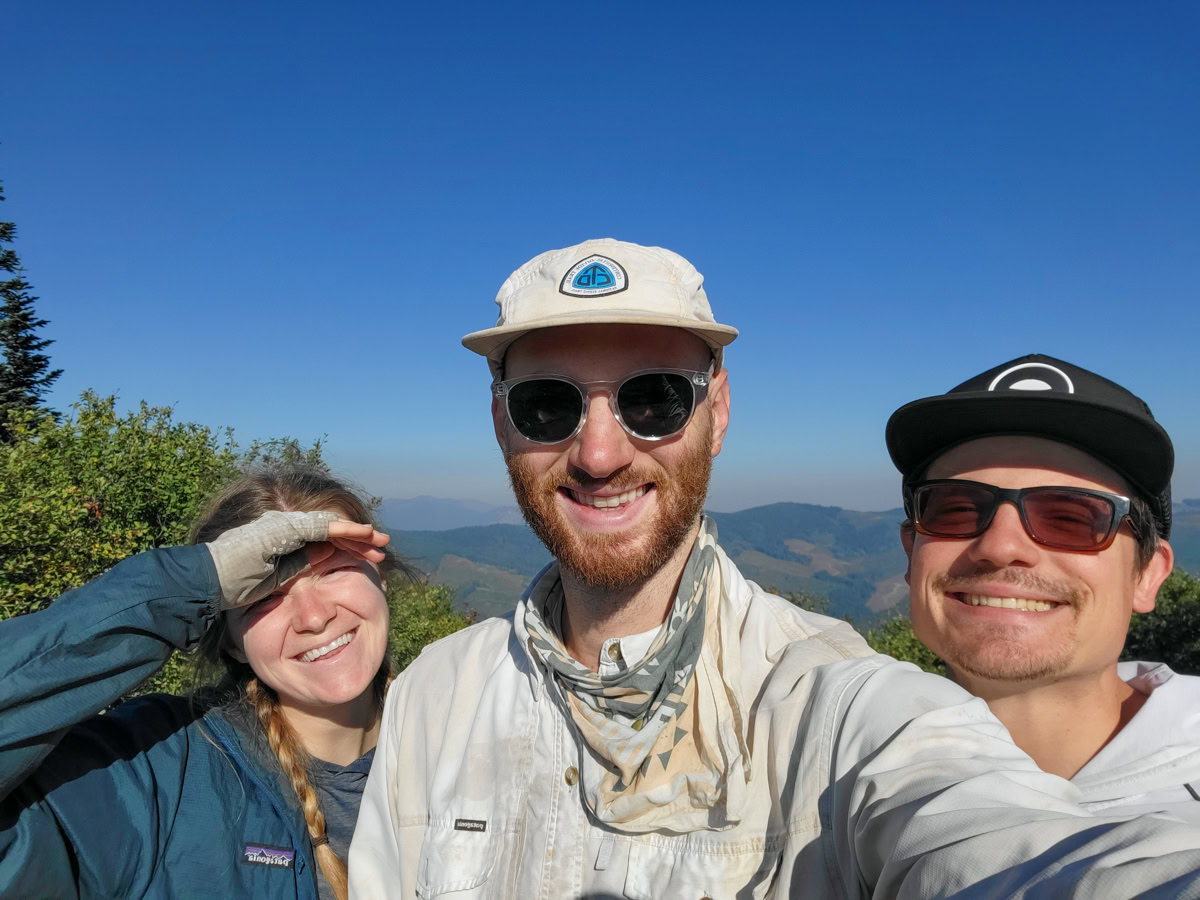
Ventilation: Let Your Body Breathe on the Trail
When it comes to summer hiking, ventilation is everything. As temperatures climb and the sun bears down, your body works hard to regulate its core temperature through sweat and blood flow to the skin. But without proper airflow, even the best moisture-wicking fabrics can feel like they’re trapping heat instead of releasing it. That’s why a well-ventilated clothing system—and gear that supports airflow—can make the difference between a steady, enjoyable hike and a slow, overheated slog.
Breathability starts with fabric, but true ventilation is about airflow—how well your clothing and gear allow hot, humid air to escape and cooler air to circulate. In the summer, especially when hiking under a full pack, strategic venting becomes essential. You want clothing that not only wicks sweat but also allows trapped heat to dissipate. This means thinking beyond just fabric type and paying attention to how garments are constructed and how they move with your body.
One of the simplest forms of ventilation is loose-fitting clothing. A relaxed fit creates a micro-air gap between your skin and the fabric, allowing moisture to evaporate more effectively and heat to escape. Tight, form-fitting layers might be good in winter or for high-intensity trail running, but in summer heat, a little room to breathe goes a long way. Shirts that hang away from the torso, sleeves that aren’t snug around the arms, and shorts or pants with articulated knees and a gusseted crotch all contribute to better airflow as you move.
Another key feature to look for is built-in ventilation zones. Many hiking shirts and sun hoodies are designed with mesh underarm panels, laser-cut back vents, or perforated fabric across high-heat zones like the chest or back. These subtle design elements can dramatically increase air exchange, especially when you’re sweating heavily under a backpack or climbing steep grades in direct sun. Button-up hiking shirts offer another practical solution: you can pop the top buttons to dump heat during strenuous climbs and close them up when you’re exposed or in dense brush.
Even small details can add up. Rolling up sleeves, loosening hip belts during descents, or pulling down your hood while in the shade are all ways to modulate your ventilation in real time. Sun hoodies with deep front zips or snap neck openings offer built-in temperature control, and pairing them with a running cap or visor can allow your head to breathe better than under a heavy, all-encompassing sun hat.
The ultimate goal is to maintain a steady evaporative cooling effect without allowing sweat to pool or heat to build up. When your clothing and gear allow heat and moisture to escape efficiently, your body doesn’t have to work as hard to cool itself. You stay drier, your energy output is more consistent, and you’re less likely to overheat, cramp, or hit a mid-hike energy wall.
In summer hiking, proper ventilation isn’t just a luxury—it’s a performance tool. Dial it in, and you’ll hike farther, feel better, and recover faster at the end of the day.
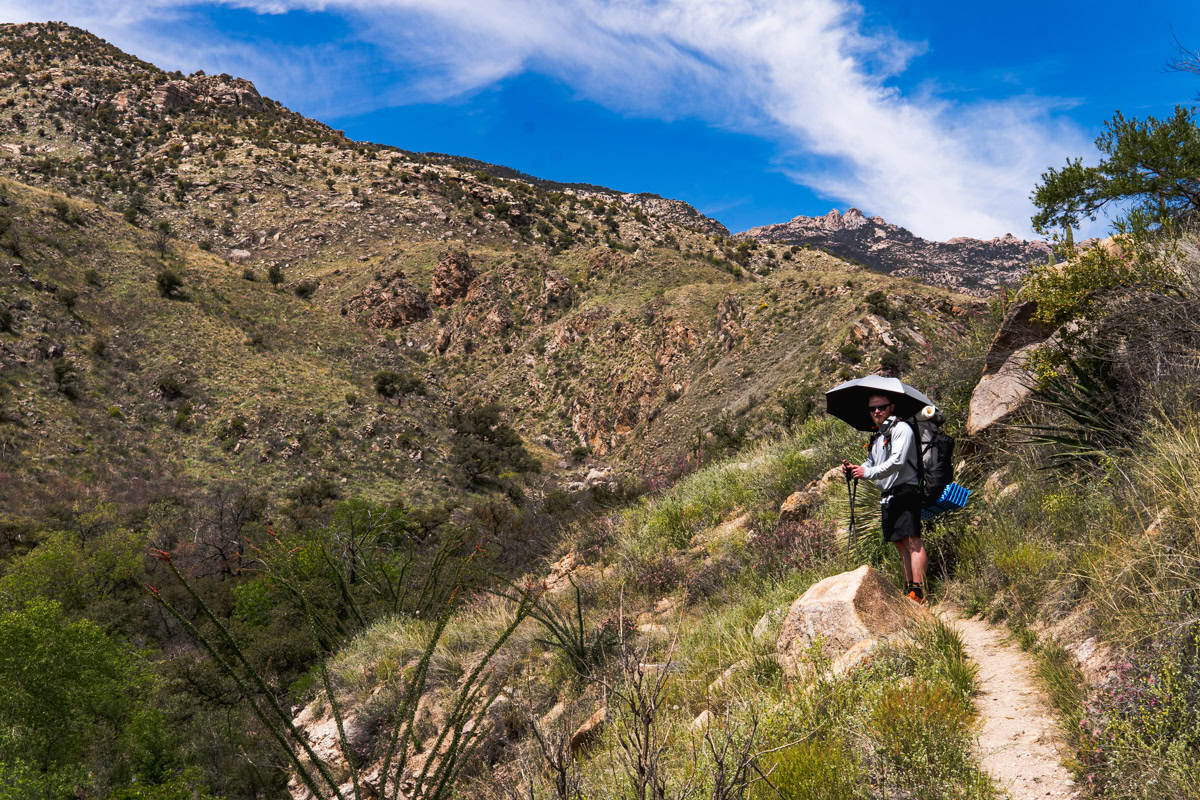
Weight and Packability: Streamlined Layers for Long, Hot Days
In summer hiking, every ounce counts—but not just because of physical strain. The hotter it gets, the more you notice excess bulk, overbuilt clothing, and gear that doesn’t breathe or pull its weight. That’s why choosing layers that are lightweight, highly packable, and versatile is key to building a clothing system that can handle the wide range of conditions summer can throw at you—without slowing you down.
That’s where weight and packability come in. A high-quality sun hoody that weighs just a few ounces can serve multiple functions: it shields your skin from UV rays, acts as a breathable base layer, and—when dampened—becomes a cooling tool during peak heat. Likewise, a lightweight nylon button-down can be worn loose for airflow, buttoned for wind protection, or soaked in water for evaporative cooling. These are multi-use garments that earn their place in your pack by doing more than one job—and doing it well.
Beyond tops and outerwear, this principle applies to every layer. Shorts and pants made from lightweight stretch-woven nylon can roll or compress tightly while still offering durability and abrasion resistance. Ultralight sun gloves or a packable brimmed hat take up almost no room but can make a major difference in comfort and protection. Even your choice of base layers and underwear should reflect this mindset—look for materials that provide high performance with minimal weight, and that won’t feel like a burden if you need to carry a backup pair. It’s also good to keep an eye out for antimicrobial items where underwear is conscerned.
Importantly, lightweight doesn’t mean flimsy. In fact, modern technical fabrics are engineered to be both ultralight and surprisingly durable. A well-designed 3–5 oz sun shirt can handle thousands of trail miles if you choose a model built for abrasion and movement. When evaluating gear, think about value per ounce: how many roles can this item serve, and how well does it perform across the full range of conditions I expect to encounter?
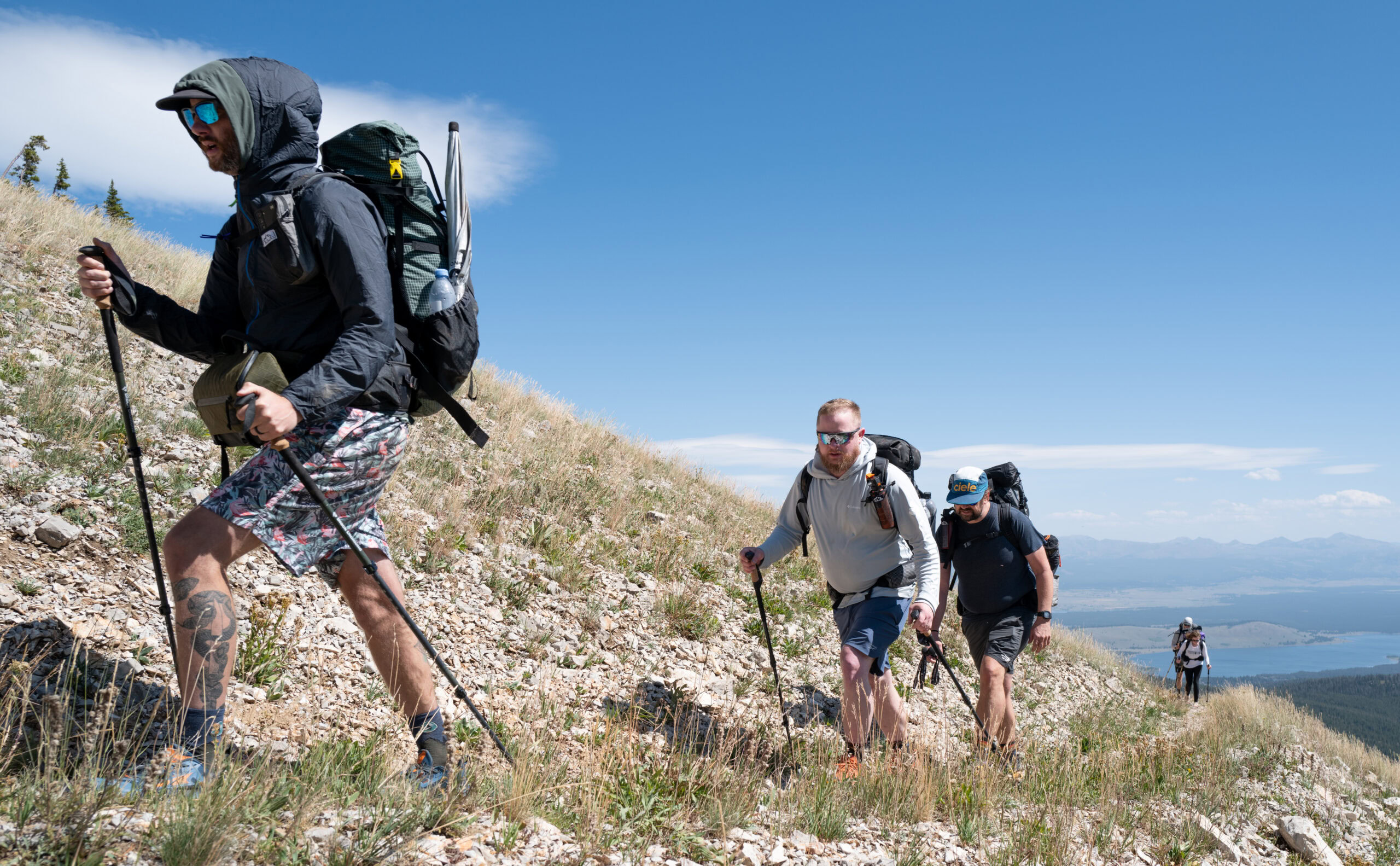
Clothing System #1: The Button-Down Setup
Ideal for: Hikers who want classic sun protection, adjustable ventilation, and more structure in their clothing.
- Top: Lightweight long-sleeve nylon or polyester button-down (roll-up sleeves + chest vents are a plus)
- Bottoms: Stretchy nylon hiking pants or shorts
- Headwear: Wide-brimmed sun hat or bandana with ball cap.
- Footwear: Lightweight trail runners or breathable hiking boots
- Accessories: Sunglasses, neck gaiter, and light gloves (for sun or bugs)
Why it works: Button-down shirts offer excellent airflow—you can open up as needed—and the collar gives extra sun protection for your neck. Combined with a broad sun hat, this setup is excellent for open, exposed trails and desert environments.
Clothing System #2: The Sun Hoody Setup
Ideal for: Long-distance hikers, minimalist backpackers, and those who prefer fewer layers with all-day sun coverage.
- Top: Lightweight sun hoody with UPF protection and built-in hood
- Bottoms: Running shorts or hiking skirt with liner
- Headwear: Cap or visor under the hoody hood
- Footwear: Trail runners with breathable mesh uppers
- Accessories: Sunglasses, ultralight umbrella (for extra shade), sun gloves
Why it works: The sun hoody has become the unofficial uniform of modern thru-hikers for good reason. It’s simple, protects your neck and arms without added bulk, and eliminates the need for slathering sunscreen every hour. Look for ones with a roomy hood and thumbholes for full coverage.
Clothing System #3: The Ultralight Heat Warrior
Ideal for: Hikers prioritizing weight savings in hot, humid conditions and moving fast through shaded trails.
- Top: Sleeveless or short-sleeve synthetic base layer
- Bottoms: Split running shorts or compression shorts
- Headwear: Lightweight running cap
- Footwear: Minimalist trail runners or sandals (if terrain allows)
- Accessories: Electrolyte tabs, ultralight pack with good airflow, sweat towel
Why it works: This system sacrifices some sun protection for maximum breathability and speed. Best suited for humid forests or shaded routes where overheating and chafing are bigger concerns than UV exposure.
Here’s some staff examples of clothing:
Peter/ULA Owner –
Shoes: Non-Waterproof Trail Runners-Hoka, Altra and Nike are my last 3 brands
Shorts: Linerless Trail Running Shorts-TNF
Shirt: Long Sleeve Button Up or Hooded Sunshirt-MH or Patagonia
Hat: Used to use a Ballcap-but finally switched to a full brim this year
Erin/Web Developer–
Owen/Production + Design –
In the summer, when I’m hiking/backpacking, I generally wear:
- Soft foam brim mesh running cap
- OR echo sun hoody (I avoid sunblock where possible and enjoy the extra long sleeves since im tall)
- Merino shirt (less smell)
- Synthetic shorts (adding wool base layers and/or rain pants if its windy or buggy)
- Light Rain Jacket (rain gear = bug gear = wind gear)
- Darn Tough socks (hiking & sleeping)
- Luna Sandals or Altra Lone Peaks (for cross country bushwhacking and/or really buggy areas)
Garrett –
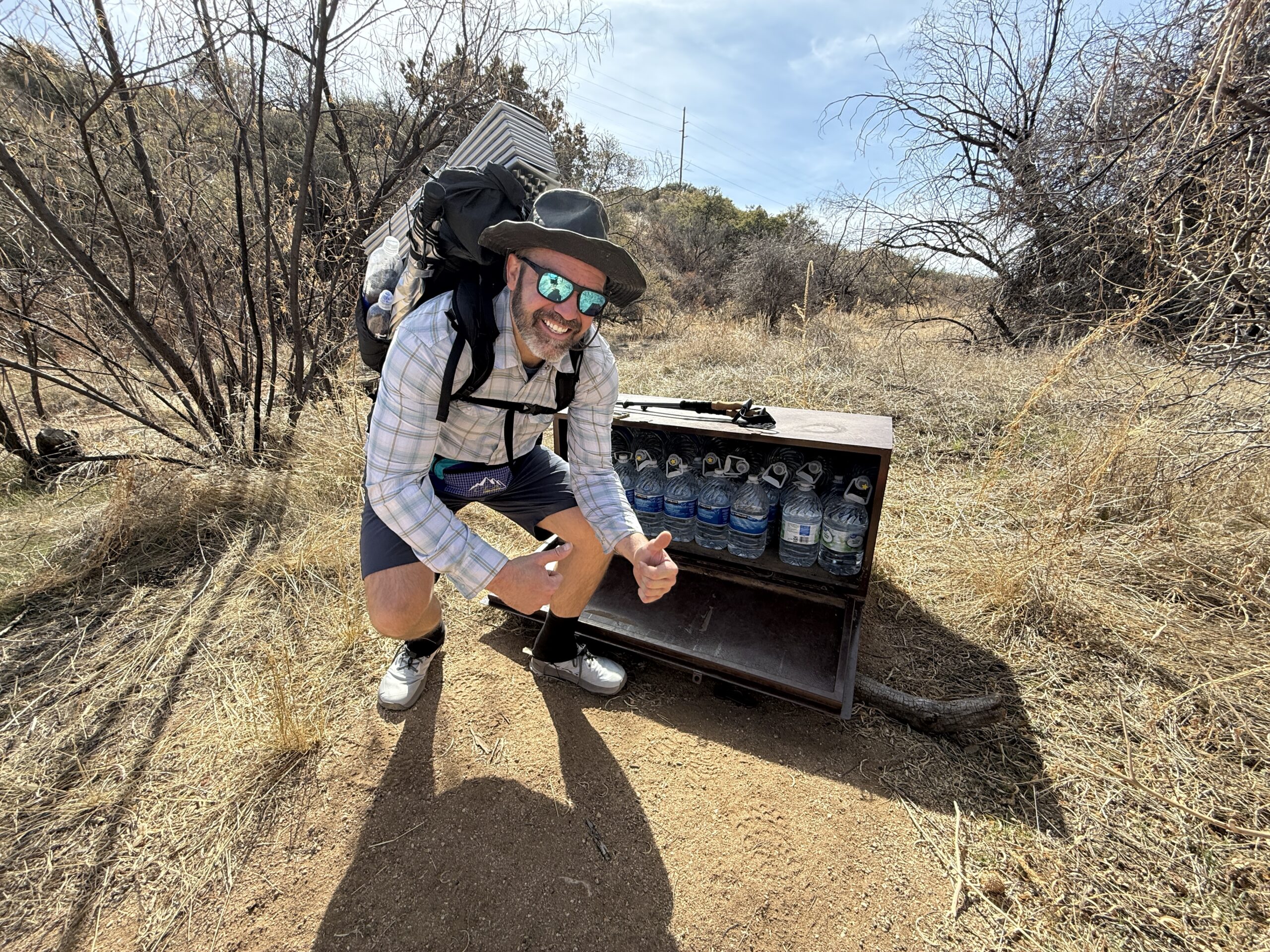
Water needs
Before getting into the hydration section we’d like to take a moment to tell you to take electrolytes on your hike and actually use them every day. Ok, now let’s get into it.
The amount of water someone needs while hiking in the summer can vary quite a bit depending on factors like temperature, humidity, elevation, exertion level, and individual sweat rate—but here’s a detailed breakdown:
In general, hikers can expect to need about 0.5 to 1 liter of water per hour of moderate hiking in warm to hot conditions. You can extrapolate this into mileage between water sources to gauge how much water you’ll need. If you know you hike 2 miles per hour and there’s a water source 6 miles away, you’ll need about 1.5 liters of water at a minimum between sources.
Several things influence this:
- Temperature and Humidity: Higher heat and dry air cause you to sweat more. In very hot, dry environments (like deserts), your needs will be at the higher end, sometimes exceeding 1 liter per hour.
- Intensity of Effort: Hiking uphill, carrying a heavy pack, or moving fast increases sweat rate and water loss.
- Individual Variation: Some people naturally sweat more, and acclimatization to heat also affects hydration needs.
- Elevation: At higher altitudes, increased respiration rates cause you to lose more fluid through breathing, increasing water demand.
Practical Tips:
- Start Hydrated: Drink about 0.5 to 1 liter before you begin hiking while at a water source. Otherwise known as “Cameling Up”. Drinking a liter at the water source before heading out can be a great way to reduce the amount of water you need to carry.
- Sip Regularly: Don’t wait until you’re thirsty—try to drink a few ounces every 15–20 minutes.
- Plan for More: Always carry more water than you think you’ll need, especially in remote or desert areas where water sources may be scarce.
- Use Electrolytes: Replace salts lost through sweat to help your body retain fluids and avoid cramps.
If you’re planning a long summer hike, aim for 3 to 4 liters per day as a baseline, adjusting up based on conditions and exertion. In extreme heat, carrying 5 or 6 liters—or more—may be necessary. Hydration is a cornerstone of safe, comfortable summer hiking, so err on the side of caution! Remember these are not based on universal needs so be sure you know your body before setting out on a summer thru-hike.
It’s important to note here that not all water sources are reliable, be sure you check conditions where applicable.
Final Thoughts
There’s no one-size-fits-all approach to summer hiking gear—your choices will depend on your pace, terrain, and personal comfort. Whether you favor the classic button-down and sun hat combo or go full-on trail runner with a sun hoody and shorts, the key is dialing in a system that keeps you protected without overheating.
Don’t forget: Test your setup on short hikes before committing to a longer trip. The best clothing system is the one you actually enjoy wearing mile after mile.


Great article! Just got back from interior AK and the 22hrs of constant, intense sunshine (stayed low 80s) with very low humidity had me thinking about (and wishing for!) a sun hoodie. Thanks for including examples of kit.
I live in the Deep South and use an older Circuit. I like getting my shoulder straps/load lifters set and then, if I’m hot and on decently even terrain, loosening the shoulder straps a bit which allows the pack to hang back and ventilate. If the terrain gets more technical it’s easy to tighten the shoulder straps for stability.
Hey Todd, thanks for reading and that’s a great tip to get some relief while hiking! – Garrett
This was a very educational read—thank you for posting.
Thank you, Jason! – Garrett
I notice that you stress the importance of long sleeves to protect the arms, but not long pants to protect the legs, frequently showing people walking in shorts. Why are arms more in need of protection than legs?
None of us like hiking in pants. – Garrett